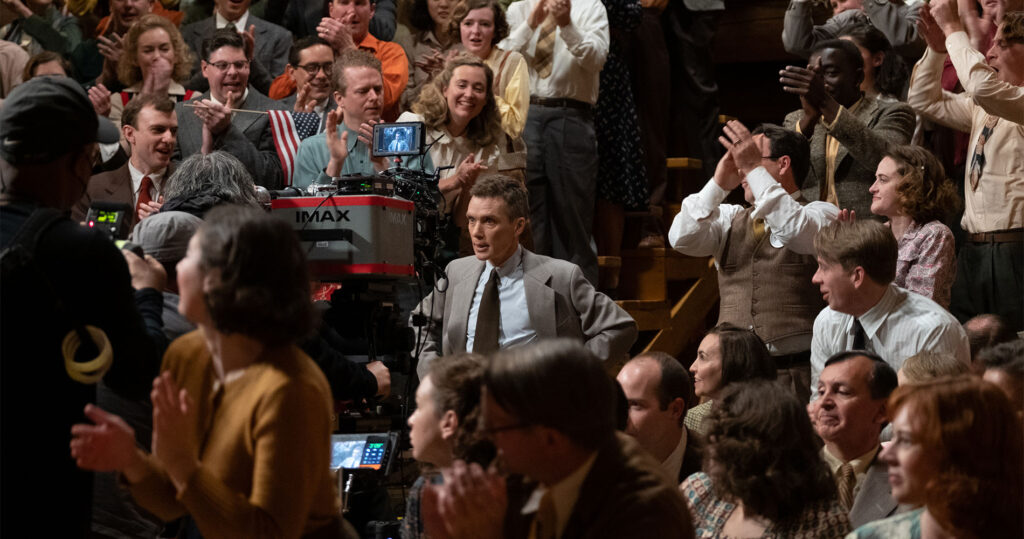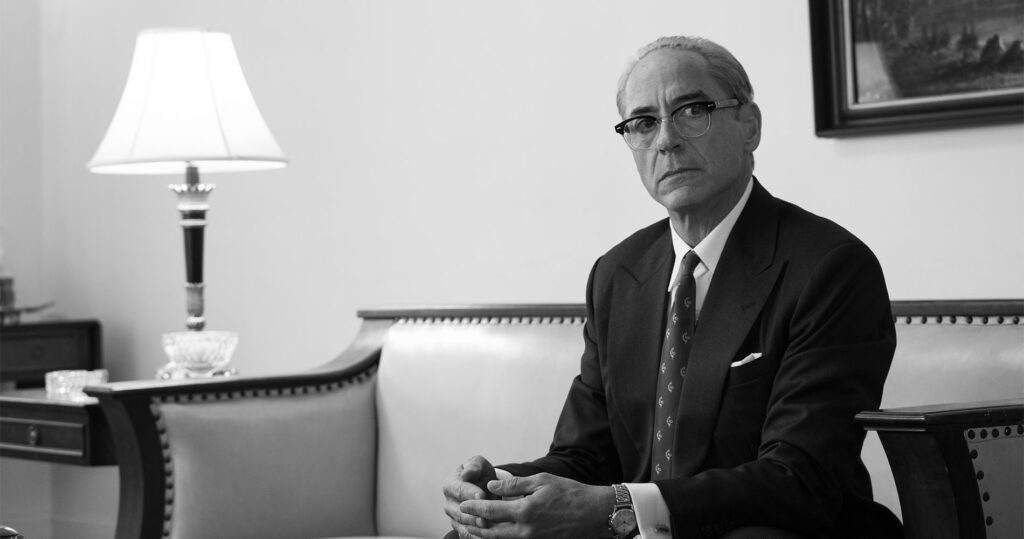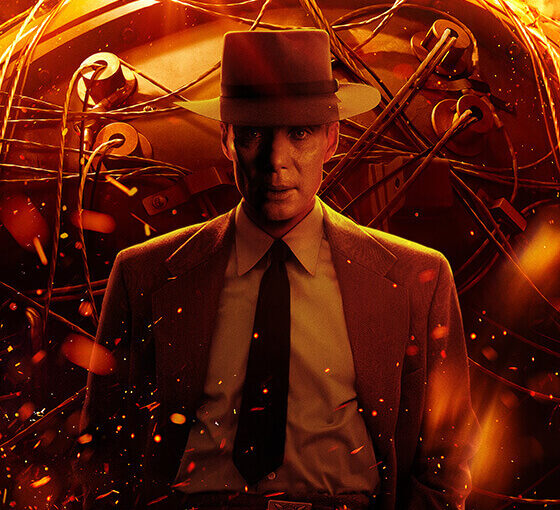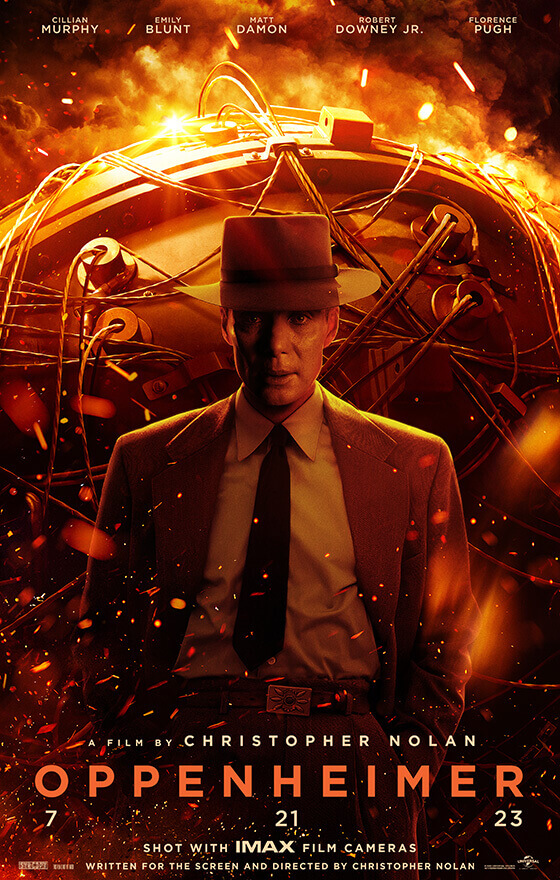Oppenheimer, the film by Christopher Nolan has usurped Russians from Dream of the Blue Turtles as the leading edge of cultural awareness for “father of the atomic bomb”. In that song, Sting flippantly introduced the subject as “Oppenheimer’s deadly toy”. In reality, his relationship was much more complex with nuclear weapons than that; but kudos to Sting for introducing a name to millions of folks who otherwise wouldn’t have heard it until now. Oppenheimer is a big film in the most Christopher Nolan manner possible. It’s a three-hour dramatic tour de force that grabs viewers by their shirt collars and maintains its grip for the vast majority of its run time.
Unlike Nolan’s other works, Oppenheimer is driven by dramatic sequences, tight dialogue, and acting that’s top-notch. There aren’t any big action sequences, but viewers who want a breathtaking overview of the Atomic Bomb, its creation and after-effects will be mesmerized. That’s all the more amazing because there are about two dozen characters as the film jumps between a 20-year era in history. Those characters are all memorable and their role in Oppenheimer’s life and work are always clear, unless they aren’t.
This is a Christopher Nolan film after all, and some scenes are truncated or have certain lines of dialogue not audible. Those lines or scenes will be seen later in the film, but only when they need to be shown in order to crystallize plot threads. Nolan also uses black and white film to contrast the setting, tone, timing and perspective of the story in a near-perfect manner. There’s a reason why some scenes are in color and others aren’t. Some characters are shown in a flashback in black and white, then immediately shown in the current story in color, or vice versa. When you see the film, this effect is akin to a chess match that the characters are having.

As a film, Oppenheimer is very difficult not to look at. There are dozens of scenes that were filmed close-up, with the minute details of the actor’s faces or bodies filling up the screen. And because this is a character-driven film, there are many more opportunities for people to fill the scenes than Nolan’s other works.
The first act of the film is more of an artistic painter’s approach to Oppenheimer as a person, than a traditional movie. There are short, chaotic cuts and close-ups of Cillian Murphy interspersed with micro close-ups of the stages of explosions, reactions and wires that are reacting to electrical charges. This part of Oppenheimer focuses on his early educational life as the background, but it’s being presented in hindsight because he is currently being questioned by a Congressional panel.
He’s a very gifted student who is well-networked, but also mischievous, too direct at times and keenly aware that he’s usually the smartest person in the room. As a teacher, he wants to engage in theoretical physics and the concept of energy relating to collapsing stars and the blackness of space. He is also very open-minded, even to those with radical ideas on campus. Because of this, he makes numerous friends in a school communist organization, which unfortunately comes back to haunt him.

The classroom next to his is working on a machine that will research, and hopefully split, atoms. As the world’s drumbeats to WWII get louder his classes get bigger and his knowledge of physics gets more useful.
The world’s top physicists have been captured or are working with the Nazis. When they make a key breakthrough in nuclear power Oppenheimer realizes that the world is racing towards weaponizing this new technology. The lab next to his classroom is able to replicate what the Germans did and he’s given the chance to form his own team.
Oppenheimer teams up with a U.S. General and they create their own research facility in Los Alamos. It’s a city where they all live with their families and can conduct testing and research with minimal delay. The film does a great job of making the potentially incomprehensible process of nuclear reactions, bombs, and the science behind them something that non-tech folks can understand. When you see Benny Safdie as Edward Teller talking about a different delivery method for the bomb that could prove more efficient you’re able to follow the logic.
The success of the bomb’s testing starts Oppenheimer’s concerns about responsibly using that power. The end of WWII brings even more issues as he runs afoul of certain politicians, which results in his inquiry that started the movie.
Oppenheimer is a powerful film that ranks alongside Schindler’s List in terms of a war or combat film that will stand the test of time. It’s impossible not to compare the two films in terms of quality and deftly telling a story to audiences that aren’t familiar with its titular character. The final act of the film focuses on McCarthyism and communist hearing, where his past history, as well as that of his wife and peers, will resonate with folks today.
Could you really be held accountable for one meeting that you had with someone a decade and a half ago? Your actions have always been solid, but those who seek you harm are focusing on that meeting or perhaps the beliefs of a second-tier associate. Could you really be held accountable just for RT something on social media? Your actions are solid, but those who don’t think like you do will do anything to cause you harm. McCarthyism and the public’s zeal to believe or jump on the bandwagon of those who said something on social media that runs counter to what they believe have much in common.
Oppenheimer was an independent thinker who wasn’t afraid to surround himself with people who question his work or beliefs. While the movie, Oppenheimer was indeed a fantastic piece of cinema, I hope that the irony of those who persecuted him isn’t lost on all of audiences and the similarities that they might share.
Oppenheimer is rated R for nudity, language and a sense of terror or loss of life.






 Facebook
Facebook Twitter
Twitter Flickr
Flickr GooglePlus
GooglePlus Youtube
Youtube